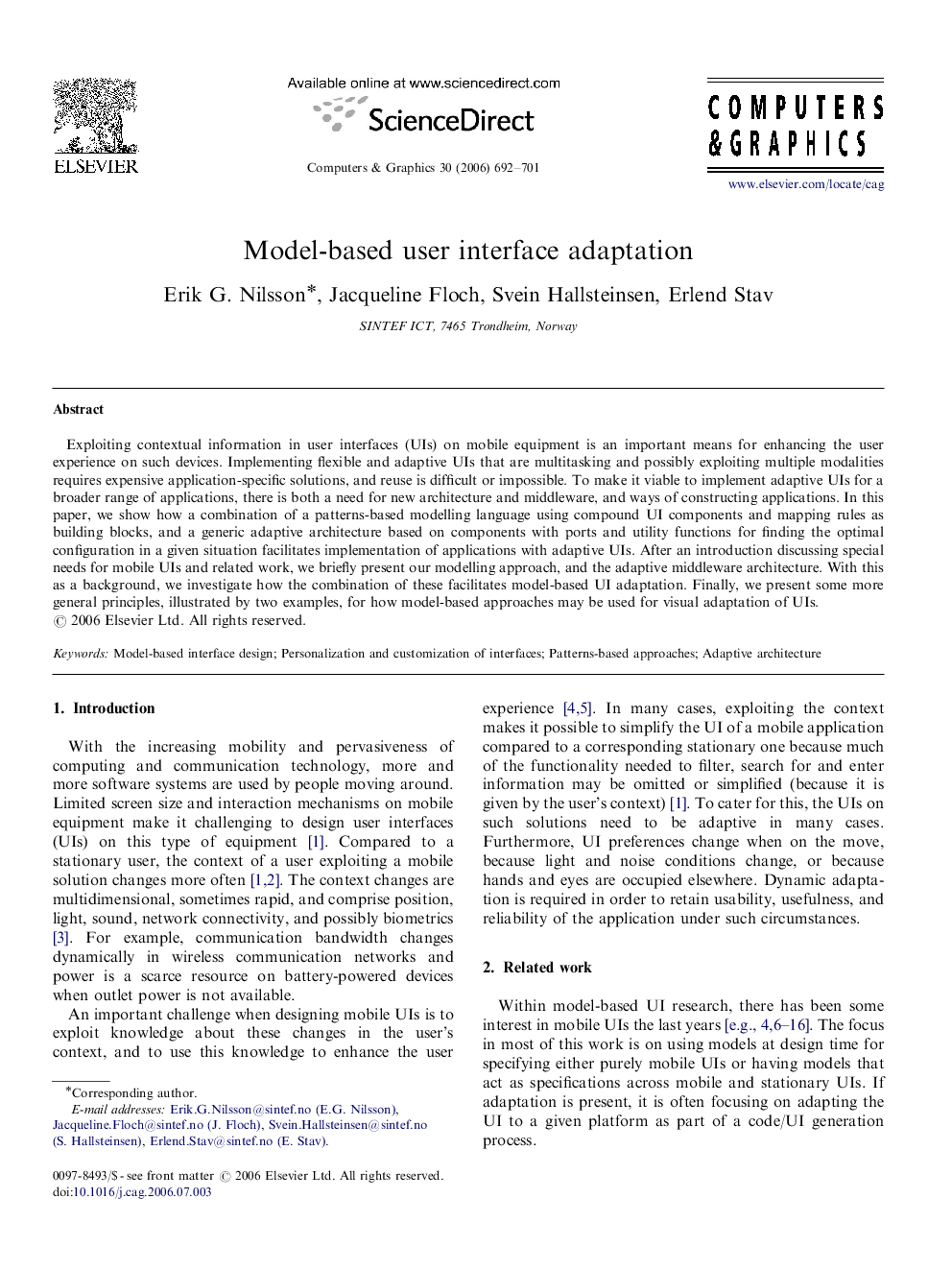| Article ID | Journal | Published Year | Pages | File Type |
|---|---|---|---|---|
| 442772 | Computers & Graphics | 2006 | 10 Pages |
Exploiting contextual information in user interfaces (UIs) on mobile equipment is an important means for enhancing the user experience on such devices. Implementing flexible and adaptive UIs that are multitasking and possibly exploiting multiple modalities requires expensive application-specific solutions, and reuse is difficult or impossible. To make it viable to implement adaptive UIs for a broader range of applications, there is both a need for new architecture and middleware, and ways of constructing applications. In this paper, we show how a combination of a patterns-based modelling language using compound UI components and mapping rules as building blocks, and a generic adaptive architecture based on components with ports and utility functions for finding the optimal configuration in a given situation facilitates implementation of applications with adaptive UIs. After an introduction discussing special needs for mobile UIs and related work, we briefly present our modelling approach, and the adaptive middleware architecture. With this as a background, we investigate how the combination of these facilitates model-based UI adaptation. Finally, we present some more general principles, illustrated by two examples, for how model-based approaches may be used for visual adaptation of UIs.
